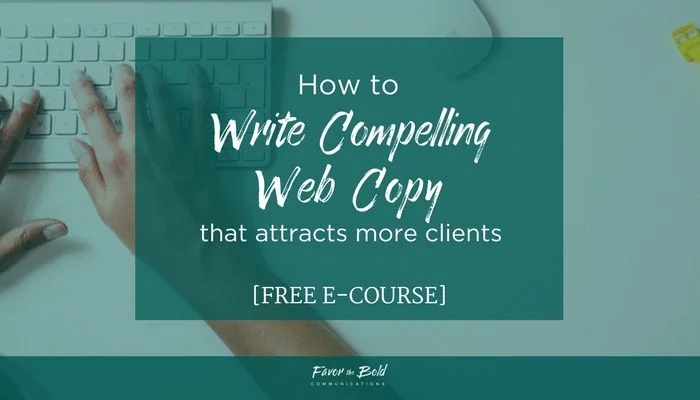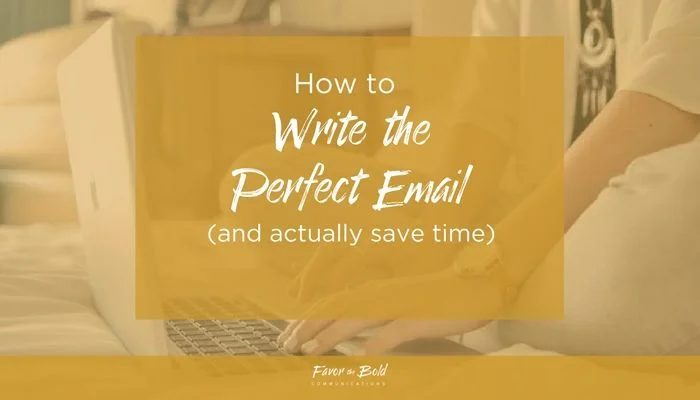We all have that one friend: the one who’s terrible at telling stories.
You know what I’m talking about. They start a story about one topic, but then get sidetracked with details and the backstory and side-stories about tertiary characters that have nothing to do with anything until you’re bored out of your mind and have no clue what your friend’s talking about anymore.
I admit, I might be extra judgey about bad storytellers because that’s what I do for a living: I help small business owners tell compelling stories that attract their ideal clients.
Because that’s all good communications are: an engaging story.
But that’s also why so many small business owners struggle with communicating the value of what they do. They simply don’t know how to tell the story.
Now, I could rant for hours about the many pitfalls entrepreneurs face when communicating about their businesses, but since we’re talking about storytelling, I’ll try to follow my own advice and stick to the topic at hand.
That is, how to tell a story that articulates the value of what you do so that people will pay you to do it. And it all comes down to one secret.
The secret to telling a good story is to take your audience on a journey.
Think of a good story like a good joke. You don’t just jump in with the punchline-- you set the joke up, give it some context, make the audience hungry for the punchline and then BAM!
And everyone laughs. (Unless you’re me and are terrible at telling jokes, in which case everyone looks at you blankly and feels sorry for you.)
Luckily, I’m better at storytelling than joke-telling, so you can safely trust my advice when I say that the journey is key. So how do you take your audience on a journey? Watch and learn, my friend.
1. The Main Character
Every story needs a hero, right? Frodo, Harry, Ulysses, Holden, Katniss. Every good story has a main character we care about and want to see succeed.
And your business story is no different.
It seems straightforward, but here’s where SO many entrepreneurs-- especially those with personal brands-- make a fatal mistake: they pick the wrong hero.
Because despite how great your service is and how much value you have to offer your client, you are not the hero-- your audience is. Remember what I said earlier about how a story needs a hero the audience cares about? Well who else do they care about more than themselves?
If your audience doesn’t immediately see themselves in your story, they’ll lose interest-- and you’ll lose the sale.
2. The Quest
Ok, I need to let my nerd flag fly for a second here: I love the Lord of the Rings books. I can’t help it-- I was literally raised on those stories. The Hobbit was one of the first real books I ever read by myself… until I got to the part about Gollum and he scared the shit out of me so much I had to stop.
But I digress. The point here is that if you’re familiar with that story, you know that the characters had to go on a quest. They had to leave the comfort of their homes, venture out into the unknown, go through all sorts of trials and tribulations, and eventually succeed in their goal.
For your audience, the quest is the problem you can help them solve.
For example, my audience’s quest is that their business communications (webcopy, brand voice, pitch, etc.) don’t reflect the value of what they offer enough to get them hired by the kinds of people they want to work with. To solve that problem, they can’t just stay at “home” in their comfort zone-- they have to proactively do something, or “go on quest” to solve it.
So when I’m pitching my services, I have to introduce that quest-- the one we’ll go on together.
3. The Struggle
So your audience-- the hero of your story-- has set out on their quest. Now it’s time for the action.
Think about your favorite stories: there’s never just one hurdle for the main character to get over. There are surprises and close calls and moments of jubilation right before yet another challenge appears.
That's what keeps the story interesting-- and let’s face it, that’s real life.
So when you’re telling your story, explore all of the struggles your clients face. Explore what they’ve tried that didn’t work. Explore all the little monsters and setbacks they’ve had to face on this journey. Explore what scares the shit out of them-- what’s their Gollum?
The better you understand and can articulate their struggles, the more your audience will trust that you know what they're dealing with-- and the more they’ll believe you can help them.
4. The Secret Weapon
This is the part of the story when all hope is lost, when defeat is inevitable, when the hero can’t go one step further-- and then something happens that changes everything.
The hero is saved in the nick of time by outside help, or a new tool, or newfound knowledge, or a secret that unlocks everything else. In the best stories, the secret weapon is all of the above.
In your story, it’s your offering.
Notice the timing on this. We’re not introducing the secret weapon that ensures victory for the hero on the first page of the book. That would be a seriously shitty book. You’d set it down and never pick it up again.
And yet I see entrepreneurs inadvertently doing this all time: they introduce the solution before introducing the problem.
The fact is, your secret weapon is one key element in a greater plot-- it’s not the plot itself. Confusing the two is like revealing the punchline at the beginning of the joke-- everyone will stare at you blankly and feel sorry for you.
5. The Happily Ever After
I have to admit, this part is where your story will be very different from books and movies.
In traditional stories, this is the last chapter of the book, or the last 5 minutes of the movie. The beast is slayed, the princess is saved, the bad guy is defeated, never to return again. Don’t get me wrong, we’re all relieved everything turned out ok, but once the action’s over, we stop caring.
But in your story, this is the absolute most important element.
Why?
Because remember, unlike books and movies, in your story, your audience is the hero. They aren’t just following the story, they're living it. So they care-- desperately-- what that happily ever after looks like.
Which is why you need to start here.
You need to know exactly what your secret weapon will do for the hero in the long run. You need to know what that happily ever after looks like.
And you need to be able to articulate it.
It’s not enough to say that your secret weapon will help the hero defeat the bad guy-- why does she want to kill the bad guy in the first place? You need to understand her motivations and what her life will be like once the bad guy is defeated.
I know this metaphor is a little confusing, so I’ll use myself as an example.
When pitching my work, I could say, “I work with clients to help them better communicate their value.” But that’s the same as saying I can help them slay the dragon. Why do they want to communicate their value in the first place? Why even bother setting out on the quest?
That’s why I focus on their end goal, their happily ever after: Attract more of their ideal clients so they can make a living doing the work they love.
That’s what’s driving them. That’s why they left the comfort of their homes to set out on this quest.
No one spends money to communicate better-- they spend money on what communicating better will bring them.
So what’s your audience’s happily ever after? Why do they need what you offer?
The answer to this question is the foundation for all of your communications. It’s the key that unlocks your clients’ motivations and helps you understand their needs. It’s the magic bullet.
So before you do anything else, you need to be able to answer this question.
Your story-- and your business-- depends on it.











![How to boost your brand offline-- and get more business [Part 3]](https://images.squarespace-cdn.com/content/v1/5671d7a82399a31f114f4c55/1477565172008-2K7456WNHWYM99T12HTV/How+to+boost+your+brand+offline--+and+get+more+business.jpg)